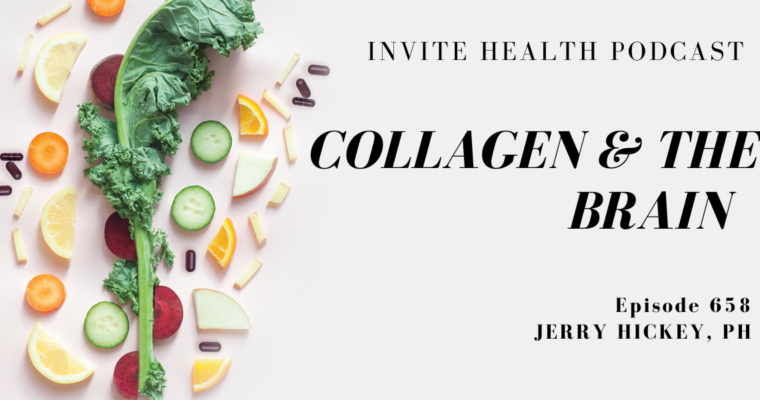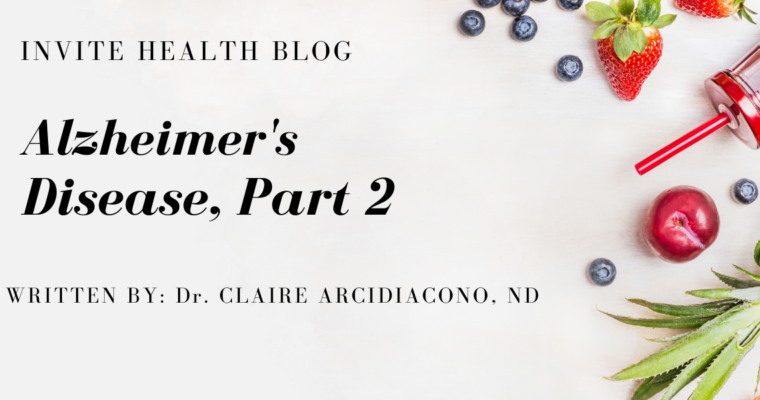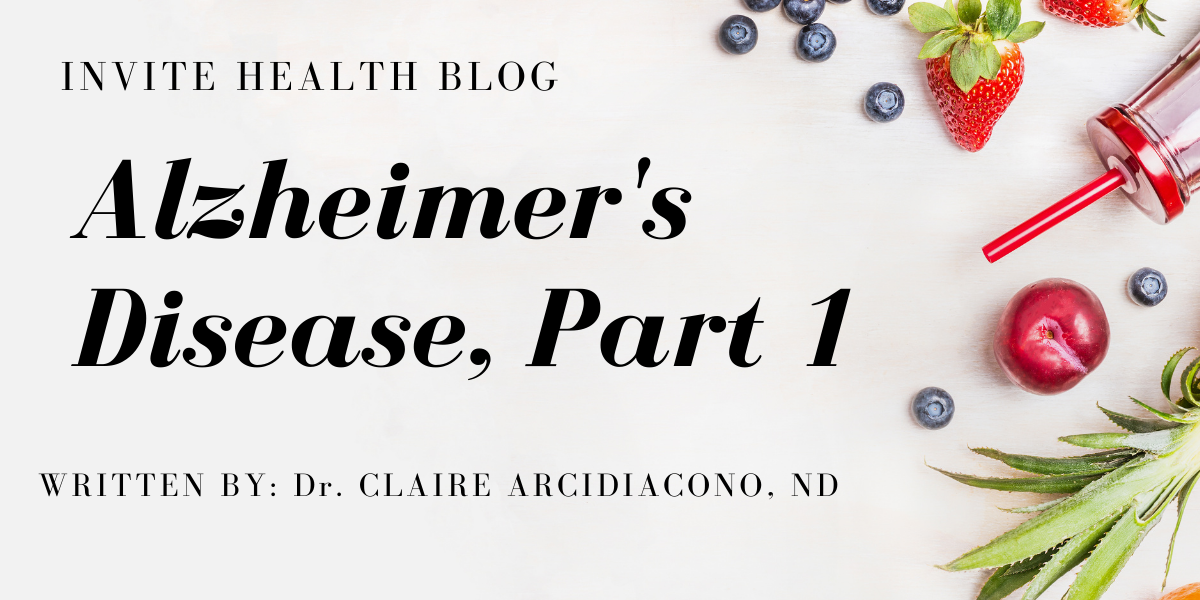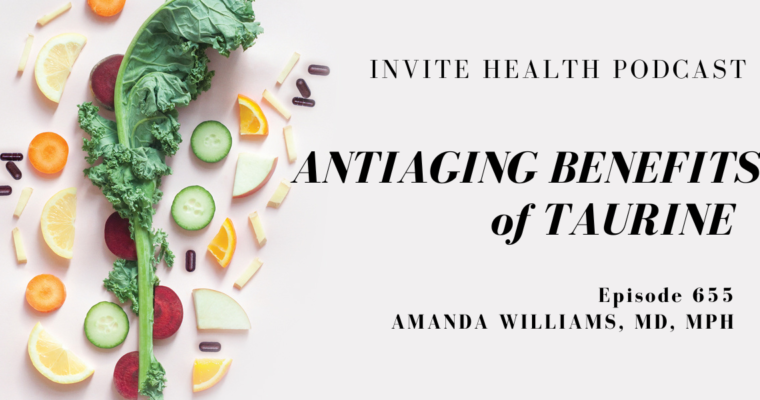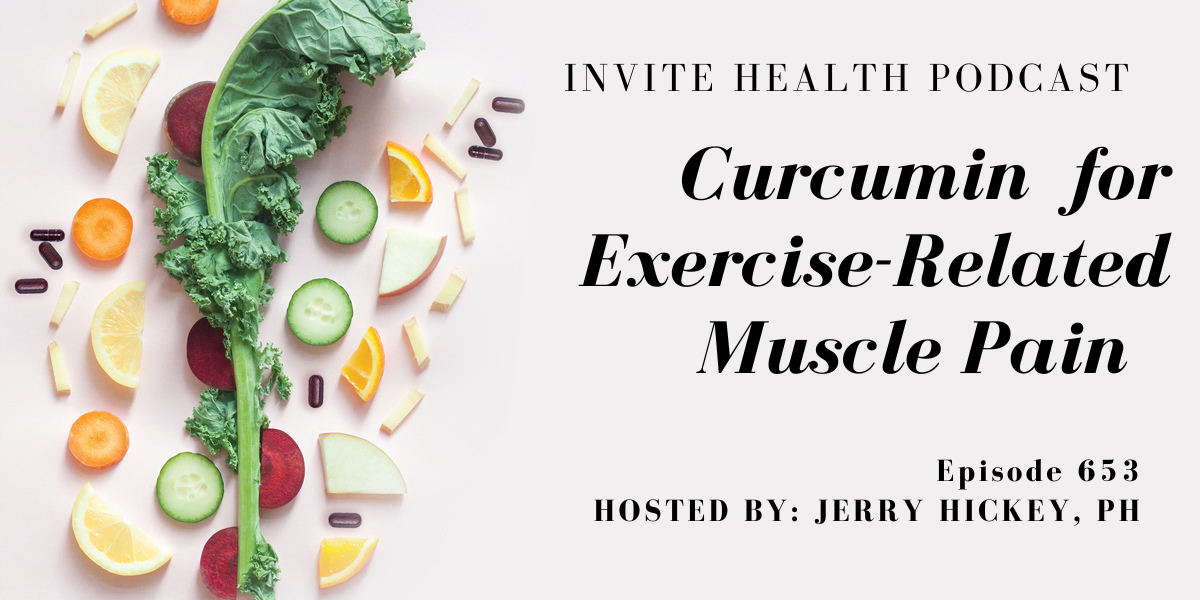Subscribe Today!
Please see below for a complete transcript of this episode.
CURCUMIN FOR EXERCISE-RELATED MUSCLE PAIN, INVITE HEALTH PODCAST, EPISODE 653
Hosted by Jerry Hickey, PH

InViteⓇ Health Podcast Intro: [00:00:04] Welcome to the InViteⓇ Health Podcast, where our degreed health care professionals are excited to offer you the most important health and wellness information you need to make informed choices about your health. You can learn more about the products discussed in each of these episodes and all that Invite Health has to offer at www.invitehealth.com/podcast. First time customers can use promo code podcast at checkout for an additional 15% off your first purchase. Let’s get started. † [00:00:34]
Jerry Hickey, Ph: [00:00:40] If you’re like me, you love physical activity and having a half an hour or more of physical activity a day is very important. The physical activity exercise is the best antidote to aging. Now, of course, there’s other things sleep, good food, reading and mixing it up with other people and being social. So, a lot of things that are important to push back on the aging process. But exercise is a leading part of that plan. A leading part. I don’t know if we have anything better than exercise for pushing back on aging. So, I like high intensity exercise, like kayaking and lifting weights. I love that stuff. It can cause soft tissue injuries. I mean, high intensity exercise commonly causes some muscle pain, some stiffness and, of course, fatigue. And if you really go over the top like a triathlete or you run a marathon or a mini marathon, etc., it really can cause an issue. It can cause pretty bad soreness in your muscles. And the problem is, if you go back to exercising too quickly, if the muscle hasn’t recovered, you could cause a soft tissue injury which can take weeks to heal. And the older you get, the longer the healing process takes. So, many people take NSAID type drugs for their muscle pain. NSAID type drugs would include an ibuprofen, which could go under various names such as Advil and Motrin and Nuprin and then, of course, there’s Aleve, which is Naproxen Sodium and Celebrex, which is Celecoxib. There are dozens of these drugs. The problem is all of those drugs have myriad side effects. Some of these side effects could be quite severe and some alone can happen very early on in use. When I was in pharmacy school back in the seventies, we learned that these were rescue medications we didn’t have that name for it yet. We didn’t call things rescue medications, but they really were only designed to be used for a short amount of time. Now, of course, it’s common to have these drugs prescribed on for months, for years, forever. And I don’t know how safe that is, being a pharmacist, I’m very cautious about drugs. Drugs can have interactions with other drugs and foods and sometimes supplements like herbs. Drugs can have side effects and they can have toxicities. A side effect could be sleepiness. a toxicity could be kidney damage. So, these drugs quickly can cause high blood pressure that can raise your blood pressure. My mother has some spinal pain and I’ve been taking care of it with a turmeric product, a curcumin, a very high-quality curcumin will go into that a little while. Her doctor said, don’t use these drugs, don’t use sites like Advil and Aleve because they can raise your blood pressure, which is true. Effective studies showing that they can trigger a stroke, that they can cause heart failure, that they could be toxic to the kidneys. Many of them can burn holes in your intestines and cause these seriously dangerous weeping, bleeding ulcers. They are involved with hearing toxicity. Many people, a first sign of toxicity from them is ringing in the ears, tinnitus. And also, there are some studies that show they’re a little toxic to vision and might be involved with inflaming the cornea and triggering the onset of cataracts. I don’t know how true that is, but there is some data indicating that. And of course, in some people it can trigger the onset of asthma attacks. So, there are issues. So, a safe alternative is a well absorbed turmeric. So, we’ll go into that that much more. So welcome to my episode Turmeric for exercise related muscle pain. My name is Jerry Hickey, I’m a licensed pharmacist, specializes in nutrition. I’m also the senior scientific officer over at Invite Health. You can find all of the Invite podcast for free wherever you listen to podcast or just go to invitehealth.com/podcast. There are hundreds of them, and there’s different health care professionals doing these podcast episodes. You can also find Invite on Twitter, Facebook and Instagram at Invite Health and all of the information related to this podcast. The episode is listed under the podcast description. And you know, if you could leave for a review, that could be helpful for me. And, you know, of course, subscribe. But hey, without saying it, people will subscribe if they like what you’re doing, right? So, I hope you like what I’m doing. † [00:05:14]
[00:05:16] So, in any event, I’ve been recommending well absorbed turmeric for years now. How come I don’t say curcumin? Curcumin, even though they call some supplements curcumin, they really are referring to turmeric. You can get isolated curcumin, but curcumin is only one of about 150, 160 ingredients in the in the Curry plant. And they get this from the roots of the plant. It’s called turmeric. In Ireland, we used to call it tumeric, a lot of places with a sort of an English history called it tumeric like down in Jamaica, etc., in the Caribbean. But it’s turmeric. Turmeric is very poorly absorbed by humans, but there are various brands on the market that are well absorbed. And I go into the brands at the end because it’s important to know this, because if you get a regular turmeric, it might be like appealing because it’s cheaper, but it might not be worth anything unless you just want to stay in the intestines. Now, over the years, they have found many benefits, a very large body of evidence, very high quality human clinical trials from various academic research institutions that are also high quality indicate that turmeric has many benefits. The main ingredient that’s been studied is curcumin, but there’s a lot of other ingredients, like aromatic turmerone, which is an essential oil and bismuthoxycurcumin, and they’re all important. They all work together for better benefit. They amplify the benefits of the herb. So, there’s a bunch of studies on brain health and memory health on this herb. I think it’s absolutely real. Intestinal health, like maybe even reducing the risk of polyps and colon cancer, arthritis pain, that’s probably the leading category for this herb. Although the research on brain health is catching up at this point. There are studies on diabetes, but I didn’t trust the places where those studies were coming out of. So, I don’t believe, I don’t know if they’re true to studies on diabetes and reducing blood sugar in diabetics, not in the general public. Great, like I said, for arthritis, but pretty much any kind of pain like spinal pain, muscle pain, nerve pain, possibly even headaches, tendonitis. It’s pretty it’s pretty useful herb for just about any kind of pain. And there’s been reviews like Tufts University did this wonderful review, they looked at two herbs, turmeric and Boswellia. Boswellia is Indian frankincense, Boswellia Serrata, it has Boswellic acid and other ingredients in it. And they’ve shown that both those herbs work for various kinds of pain, especially arthritis pain like arthritic knee pain, and the turmeric in particular works as well as NSAIDs, nsaids like Advil, Aleve, Celebrex, according to human clinical trials. I mean, this is real. † [00:08:05]
[00:08:08] So, I’m going to go over some of the studies now because we’re focusing here on muscle pain, because we want you to be able to go out there and take a walk. We want you to be able to go out there and play some pickleball or garden or whatever you want to do. So, my objective is to prove that turmeric is a viable, very safe alternative to these problematic drugs for your muscle pain. In fact, you know, I’ve had a lot of letters over the years from clients, I had one lady who’s a bartender who said she had pain in her back and her knees for years. And, you know, she’s on these hard tiles. She works in Manhattan in a restaurant. And she she’s been standing on this tile for like ten-hour time periods, for years, four days a week. And she said, this is the first time she’s been pain free. She went on a combination of turmeric and Boswellia, and she’s been pain free ever since. I’ve had people who are professional drivers, like in trucks or cabs and Lyft and Uber and limousines, who said, you know, I had really bad back pain because when you sit down in like a limo all day and you’re driving all day, your back is like an accordion, it kind of folds in on itself. And these people are prone to pain. And they said this really helped their back pain. So, I’ve had a I’ve had a younger ballerina, I’ve had older professional dancers who have become choreographers or dance teachers who had a lot of pain in the morning and back pain and muscle stiffness and aches, etc, and they’ve gone on these products, and they’ve had excellent results, waking up without stiffness. And, you know, it allows them to keep on going with their career. So here is a study now, this is one of the good products. This is the Sabinsa, Sabinsa’s a quality nutrient supply company and they make a curcumin with black pepper extract, it’s called piperine. And the black pepper allows you to absorb the curcumin. And they’ve done, they put their money where their mouth is. They’ve funded a lot of pretty good quality studies that show that their product is safe, and it really works. So, this is a study in elite athletes. These are soccer players, and you know, they’re prone to injuries and they’re prone to pain. And they said that in the study that the curcumin really, this curcumin from Sabinsa, it really reduced muscle soreness and body soreness. And that, you know, they took blood tests and they saw that it absolutely reduced inflammation in the muscles. That they measure something called CRP. CRP stands for C-reactive protein, and it’s released from your liver when you’re inflamed, and that’s a proxy for inflammation. We don’t know if CRP is good or bad. Is it hurting you as a protecting you? But we know it goes up when you’re inflamed. And they found that and the athletes and the soccer players, when they gave them the curcumin, CRP went down. And this is after high intensity exercise. I mean, training for soccer, practicing for soccer, playing soccer. And this is important, you know, many of these elite athletes, they play matches every few days. They don’t get a lot of downtime. So, they can develop these soft tissue injuries that really can affect their performance. They’re not getting enough time to rest and recover their muscles. So, they oh, by the way, it was a big reduction in soreness, in muscle soreness like in their leg muscles, a big drop in muscle soreness. It’s a very recent study, it’s from a couple of weeks ago. It’s in the journal Frontiers of Nutrition and it’s not Nottingham Trent University in the UK, you know near Nottingham Forest. So, you’ve heard of Nottingham Forest, with all those legends, those legends of Robin Hood. † [00:12:09]
DON’T ACCEPT CHRONIC PAIN AS NORMAL, BIOCURCUMIN AND 5-LOXIN CAN HELP. INVITE HEALTH PODCAST, EPISODE 628>>Listen now!
[00:12:10] Now here’s, here’s an important study because this is younger athletes. It’s middle school and high school athletes. It’s a new study, it’s another new study, also the journal Frontiers in Nutrition. And it was January 4th of this year. So, these are high school students and middle school students. They engage in wrestling, soccer, tennis for at least 20 hours a week. So, that’s a lot of pressure on their muscles, on their young muscles, on their developing muscles. So, every morning they gave them a curcumin supplement with their breakfast, always take curcumin with your food, always take turmeric with your food because it’s a little bit spicy, so you want it with food. They gave them 300 milligrams, an equivalent of 300 milligrams of curcumin every morning with their breakfast, and they had really good results. A significant drop in muscle soreness. It’s a three-month long study over the three months, a big drop in muscle soreness, and this is compared to placebo. So, the people who were taking the fake pill, they had the muscle soreness, the people on the curcumin, big drop in soreness and an improvement in muscle metabolism and improvement in muscle size and improvement in metabolism and the metabolic rate, a drop in cell damage that’s really important. You don’t want these young people having cellular damage from overexerting. And interestingly, there was much less muscle fatigue, which is true if you’re doing intense exercise and your muscles get inflamed, it’s harder for your muscles to recover. It affects your performance, and it affects your muscle energy, so, it really does mean something. Now, this is from Spain, various academic research institutions in Spain. It’s in the journal Nutrients, February 15th of 2020, and it’s a systematic review and meta-analysis. Now that’s important, if they do a good systematic review, they’re going through all of these electronic websites like PubMed or Ovid, and they’re collating all the studies. So, they have these search criteria, so, in this case it would be turmeric or curcumin. Muscle soreness, activity, you know, things like that. They’ll use that to search for the studies and then they’ll go through the studies and pick out the studies that are super high quality, that really are like bulletproof studies, that they’re well-reported, they’re well-designed, they’re lacking bias. They really mean something. When you get a bunch of these studies, it adds to the power of your review. There are more people, frequently it’s a longer time period because some of these studies can be rather long. There are different researchers, so, and generally when you do a systematic review and meta-analysis, it takes away from the power of like a diet or a supplement or an herb, you know, a vitamin, mineral, a drug, a surgery, it takes away from the power of it. Frequently, these things actually work better than what they say in these systematic reviews and meta-analysis, because they always, always have included studies with negative results or poor results. So, if they turn around and do a meta-analysis and say something works, it’s pretty much a guarantee that it really does work. And if it says it’s safe, it’s a guarantee that it’s safe. So, this is a systematic review and meta-analysis. They wound up with 11 studies, it’s in the journal Nutrients, February 15, 2020. And like I said, it’s researchers throughout Spain. Now, there’s many new studies after that, there’s dozens of new studies after that, so this is the old studies. These are the studies before 2020. And there’s no doubt about it. Curcumin sometimes taken before intense exercise, but usually taken after, really does reduce muscle pain, really does help prevent muscle damage. It reduced creatine kinase that’s important, when muscle is injured, it releases creatine kinase and that’s a measure of muscle injury and creatine kinase was reduced. But it also when they did the blood tests, it absolutely reduced inflammation like it reduced tumor necrosis factor alpha, which is abbreviated TNF alpha and it reduced interleukin six. Interleukin six was the interleukin that was damaging the tissues of the lungs in people with severe COVID 19. So, it was reducing these markers in the blood test, meaning that it really was protecting people from overexertion and it improved muscle performance. Once again, if you have less inflammation, your muscles perform better. So, this is a safe way and an honest way and a legal way of improving performance, if you’re an athlete. † [00:17:02]
[00:17:05] So, here is the University of Kentucky that’s in Lexington, Kentucky, and All State University in Muncie, Indiana. And they’re reviewing the science on turmeric, curcumin. What can it really achieve? That’s what they’re doing. It’s in the journal Critical Reviews and Food Science and Nutrition in 2021. So, they go on to say, you know, this obviously muscle inflammation from intense exercise. Well, maybe you don’t know this, is due to the generation of free radicals, oxygen free radicals. In other words, using up all that sugar in the muscles, generating all that energy creates these free radicals that inflame your muscles and can lead to pain and poor performance and even contribute to injuries, etc.. So, they’re saying one of the reasons why curcumin works is, yes, it’s an anti-inflammatory, but it’s also an antioxidant, it’s a great antioxidant. So, they go on to say muscle inflammation from intense exercise is due to free radicals generated via muscle use. This leads to pain and reduces performance, physical performance in the near future. They said curcumin in turmeric is an antioxidant, so they’re reviewing all the different things that turmeric does. It’s antioxidant, it’s anti-inflammatory, but it also inhibits AGES, the accumulation of ages. Now ages stand for advanced glycation end products. This could be caused just by eating a lot of sugar, believe it or not, in healthy adults. Ages are generated during intense exercise and by certain foods, bad foods. And what it does, it takes your proteins and it kind of mashes them together, kind of wells them together. So, it’s no good for you. It’s not good for your heart, it’s not good for your brain, it’s not good for your eyes. So, they found that the accumulation of ages in body tissues is really reduced by curcumin, and curcumin prevents muscle damage in runners. So, that now they’re looking at two studies and they’re saying, hey, they’ve proven in human clinical trials that in runners, whether they’re running on a treadmill or running downhill, that curcumin reduces pain and inflammation and muscle damage and conventional walking or fast walking or jogging or cycling like acute cycling would be, you know, like racing along where chronic cycling is every day, jumping, arm exercises, upper body exercises, lower body exercises. This is human clinical trials, and these studies were performed in sedentary people, so, people who don’t move around a lot, people who don’t exercise, and active men and active women and the old and the young. So, there’s a lot of evidence, obviously, that curcumin is great for muscles. So, they go on to say, that curcumin reduced pain in the muscles, reduced tenderness, reduced muscle damage, reduced inflammation, increased the body’s antioxidant pool, the available pool of antioxidants, reduced the glycation end products and all the things that mess up your muscle and make your muscle get glued together and help maintain power, even in sprinters taking curcumin habitually, like every morning with breakfast, let’s say, was improving performance even in sprinters. I read a study years ago, it was a downhill race, and they gave them a curcumin that I take every morning, a turmeric I take every morning, it’s called biocurcumin-5-loxin, I take it every morning with my breakfast. I actually take it to lower risk of colon cancer, and I actually take it to reduce cellular inflammation that increases with age. And I actually take it for my brain health because I’m an older guy. So, I take two capsules every morning with breakfast. But this study was different. It was in younger men and women, they were downhill racers, and as you know, when you race downhill, your thigh muscles can really have a lot of inflammation and damage and pain. So, they started turmeric three days before the downhill race and continue it for two days after, it really reduced pain and tenderness and it really improved a rate of of recovery. Like I said, if you don’t recover totally with your muscles and you go back to the gym or running or whatever it is, you can develop a soft tissue injury that really can affect, it really could take time to heal and can affect your performance. † [00:21:33]
ICYMI:THE UNDERESTIMATED BENEFITS OF CRANBERRY, INVITE HEALTH PODCAST, EPISODE 652>>LISTEN NOW!
[00:21:35] Now, there’s studies, literally over 100 studies just on PubMed alone that curcumin is good for muscle pain. So, if you look at the studies on pain with curcumin, nerve pain like the sciatic nerve, sciatica, tenderness in your ligaments and tendons like golfers’ elbow, tennis elbow or an Achilles tendon, inflammation, an injury or, you know, trigger finger where you have tendonitis in your finger, arthritis, loads of studies where it helps with arthritis, also some studies on headaches. I don’t know how effective it is for headaches, but it’s certainly good for back pain, muscle pain, shoulder pain, arthritic knee pain and hip pain and things like that. It’s fantastic for that. And at the meantime you gain bonuses that it has some anti-cancer preventative effects of note and it’s safe and that is great for your brain. So, what are some of the companies? Well, the one I use is BCM 95, that’s the research name for it, the other name for it is bio curcumin, that’s the one I take every morning. But there’s also the Sabinsa one where they add the black pepper extract and then UCLA has one, but it’s a very low potency, I don’t know if it’s commercially available and they’re only using it for memory studies because curcumin, turmeric is great for your memory. Now just a quick mention, there’s other nutrients that can help you with exercise that have good data like creatine monohydrate is great for your brain, but creatine monohydrate is also good for muscle energy, beta hydroxy beta methyl butyrate, which is commonly called HMB, beta hydroxy beta methyl butyrate is good for muscle strength and muscle size, vitamin D and calcium after exercise because it helps with recovery, protein after exercise like whey protein because it helps with recovery. And after you exercise, you take your protein and your vitamin D and calcium, because the muscle fibers have opened up, it’s easier to get these things into the muscle. Ubiquinol, which is the active version of Coenzyme Q10, has been shown to improve performance even in young Olympic athletes. Red beet juice for performance, it has betalins and beta cyanins, these red pigments, these brownish red pigments, tart cherry for performance it has anthocyanins. So, these are all things that are useful, that are safe. In any event, I want to thank you for listening today, my name is Jerry Hickey, licensed pharmacist who specializes in nutrition. I’ve been doing this for decades, also taught nutrition many times, have written about it extensively. I’m featured in many books on nutrition. You’ll see a paragraph from Jerry Hickey, I’ve even helped author a book for universities on liver health and nutrition. But let’s get back into this, you can find all of our podcasts for free wherever you listen to podcasts, just go to invitehealth.com/podcast. You can also find Facebook, you can also find Invite on Facebook, Twitter and Instagram at Invite Health. I want to thank you for listening, signing off, Jerry Hickey, have a great day. † [00:21:35]


